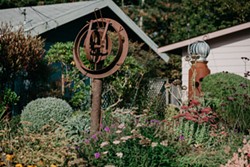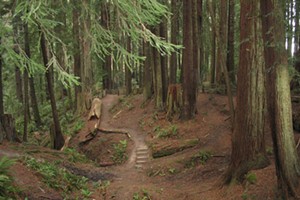[
{
"name": "Top Stories Video Pair",
"insertPoint": "7",
"component": "17087298",
"parentWrapperClass": "fdn-ads-inline-content-block",
"requiredCountToDisplay": "1"
}
]
"You're playing hooky today," Jerry Rohde's mom informed him one autumn morning when he was 12. They piled into her 1954 Ford sedan and headed into the San Bernardino Mountains to explore a historic Wild West village she visited when she was a girl.
Set in a pine forest surrounded by steep cliffs and rocky canyons, the town had a log cabin general store stocked only with canned food, a gravity flow gas pump out front and no electricity. "Seeing the living history there just fascinated me," Rohde remembers. "It was like we'd stepped back half a century in time."
Set in a pine forest surrounded by steep cliffs and rocky canyons, the town had a log cabin general store stocked only with canned food, a gravity flow gas pump out front and no electricity. "Seeing the living history there just fascinated me," Rohde remembers. "It was like we'd stepped back half a century in time."
"That's when the history bug hit," Rohde reflects from a comfy chair in his tidy living room. Through the window behind him, his wife and writing partner, Gisela Rohde, works in the explosive flower garden surrounding their house in a quiet Eureka neighborhood.
Gisela and Jerry met in San Bernardino County during college and moved to Humboldt County in 1979 because of the natural beauty and raw history here. Humboldt is a very different landscape from his native Southern California, where so much history is smothered by shopping centers and row houses. "If the land gets changed too much," Rohde explains, "it loses some of the historical connection."
As for Humboldt, "There's history everywhere here," Rhode effuses. "You can go out into the back country and find a lot of old ranches and barns and even pick up old trails." Because so much of the living history still stands, he says, "You can still feel the spirit of this place."
Over the years, Rohde has taught with Eureka City Schools and lectured at Humboldt State University. He was also a research associate, historian and ethnographer for HSU's Cultural Resources Facility. He served several times as president of the Humboldt County Historical Society and frequently writes for its journal. In "retirement," he and Gisela keep busy with about 45 historical presentations a year throughout the county.
Working as a team, they've also written four trail guides. She would take notes about the trees and wildflowers and he figured out the history. Instead of just mapping trails, the books strive to give hikers what Rohde calls a "connection with the place" by juxtaposing an area's human activity with its natural landmarks.
Rohde has dedicated his life to uncovering, compiling and sharing history — some that's never been told. He says it feels like it's what he's meant to do. His research is thorough, approachable and well respected by his peers. Not just limited to archival and library research, Rohde also gets his information from detailed on-site field studies and personal interviews. He even has a few history enthusiast buddies who keep an eye out for gems when exploring local attics and estate sales.
He disappears down the hallway and returns with a giant 4-by-6-foot map from just such a friend. He unfurls it across the dining room floor with reverent flair. Bending down for closer inspection, he says the map was handprinted back in 1911. He notes how beautiful the watercolors are. Names of prominent property owners of the day fill the colored blocks — names you'd recognize from street and buildings today. Rohde says maps like this one are like snapshots in time and crucial in his research.
His biggest undertaking a four-part book series called the History of Humboldt County Places. Published in 2014, the first volume, Both Sides of the Bluff, covers areas in Humboldt's west-central region around the Eel River Valley and Table Bluff. Heavy in the hand, it's 400 pages long and includes a riveting collection of old photos, letters and plenty of stories. Thirteen years into the research for the series, Rohde figures he's about two years away from publishing the next volume, which will cover Humboldt's southern regions.
The series begins in the 1850s, when white settlers first appeared in Humboldt, and carries through into the early 1900s. The first book highlights places and people of the time and reveals a newly transplanted community feverishly working to establish western infrastructure like banks and railway lines, schools and dairy farms.
Both Sides of the Bluff is interlaced with local Native history, as well. For Rohde, this is the most interesting information he finds. He says there's so much we don't know, "basic things like the real names of the local tribes, what their boundaries were and what really happened between the tribes and also between them and the whites."
"That's never been researched much," Rohde says. There's a lot of unpublished information that's been hard to locate because, he explains, "A lot of it has been suppressed or reported inaccurately. Deliberately so."
Rohde reckons he's doing investigative journalism 150 years too late. Motivated by his belief that we have a duty to the victims in the past — and also to the people of today — he is driven to try finding and telling the truth.
"A lot of people have very biased accounts of what really happened, or maybe not much of an account at all," he explains. "People need to realize that genocide was committed against the Indians. It was happening for 15 years, it was calculated and no Indian was safe."
He continues, "The effect that that would have had on them is just almost unimaginable to me, and yet these people — the ones that survived and their descendants — they've managed, somehow, to deal with that. For the most part, you don't see that much anger. What you see is a kind of acceptance, but also a desire for acknowledgement of what has happened."
That acknowledgement would include things like returning tribal land to its people. "Some of these healing gestures can restore something of a sense of balance with the past," he says, emphasizing that this means healing not just for Native people, but for white people, too. "You don't even have to be a descendant of someone who was implicated. I think any thoughtful, feeling white person feels a sort of burden on them."
For Rohde, restoring that sense of balance is a great part of what history is. Getting to know a place and its people, and the history and spirit of the two, can shift something that happened in the past into the present. "This can have great power over what's happening right now," Rohde says. "It can influence people's lives, I think, for the better."
Both Sides of the Bluff and Best Short Hikes: Redwood National & State Parks are available at local bookstores and museums.
Jerry Rohde’s upcoming free lectures:
Going Up the River
Oct. 20, Nov. 10,
Nov. 24, dec. 8 — 7 pm
Sights and stories of early Humboldt county communities along the Eel, Klamath, Trinity, Van Duzen, Little and Mad rivers.
Saloons, Stores and Schools
Oct. 27, nov. 17 — 7 pm
Stories about striking structures, from the great Brizard store robbery in Willow Creek to the “Saloon of the Holey Ceiling” in Dyerville to the student who sat on the Redwood House School roof.
Nov. 4 — 5:30 pm
Stories of the Lyons Ranch at Bald Hills, the Timmons Ranch at Essex and the Hunt Ranches on the Van Duzen. Proceeds benefit the Buckeye scholarship program.
Hark, Hark, The Park
Dec. 1, Dec. 15 — 7 pm
Visit Humboldt Redwoods, Richardson Grove, Prairie Creek and Redwood National parks, along with other locations as we admire the tall trees and learn how they were saved.
Speaking of...
-
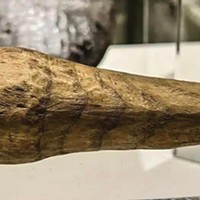
A Brief History of Dildos
Apr 11, 2024 -
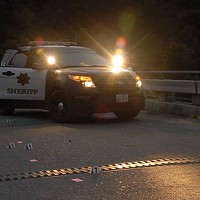
NCJ's Greenson Wins Free Speech and Open Government Award
Feb 26, 2024 -
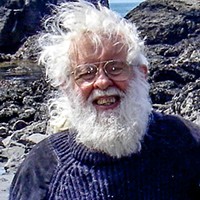
Robert William Astrue: 1928-2023
Feb 13, 2024 - More »
more from the author
-
NCJ Archive: The Journey of Radioman
- Nov 11, 2020
-
'In the Interest of Justice'
Decades after leaving the jungle, Eric Hollenbeck is awarded three Bronze Service Stars
- Dec 14, 2017
-
The Journey of Radioman
- Nov 9, 2017
- More »
-
 Camp Olympus - Spring Break Camp @ Eureka Municipal Auditorium
Camp Olympus - Spring Break Camp @ Eureka Municipal Auditorium
-
 Drink & Draw @ Savage Henry Comedy Club
Drink & Draw @ Savage Henry Comedy Club

